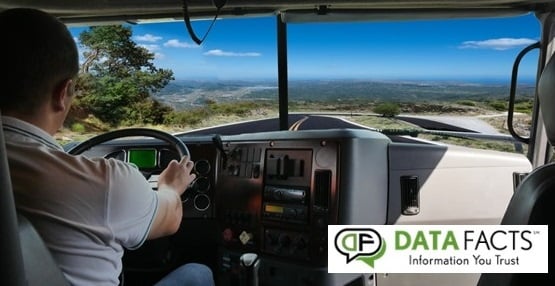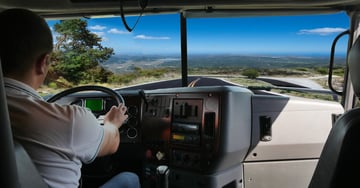
Many HR Professionals may initially think this article isn’t about them because after all, they don’t work for a trucking company. A closer look, however, brings clearer focus on the issue. If an organization offers deliveries or has a traveling sales staff, driver safety is a big risk to your organization.
A driver who operates a vehicle as part of their job opens the business up to potential lawsuits and fines in a variety of ways. That’s why HR Pros should think about implementing driver screening and monitoring into their suite of background check and safe hiring processes.
Dunaway Timber Case Study:
Don't assume your drivers have or will always have a safe driving record!
Real life example:
Situation: A case which involved a timber company’s truck driver who caused an accident that led to another driver’s death. The responsible driver’s qualifications to drive a commercial vehicle and the timber company’s failure to appropriately screen its drivers resulted in a wrongful death lawsuit.
Trial: Evidence was introduced at the trial that the timber company truck driver lied on his application and had received two license revocations. These previous infractions could have easily been discovered by the timber company with a simple background search.
Outcome: A jury in Arkansas awarded $7 million to the family of the driver who was killed in the accident.
Hiring and employing drivers opens your company up to liability from that person’s driving history. What if he has a DUI or other serious moving violations? What if his driver’s license is expired? Your business could end up dealing with a costly negligent hiring claim, devastating public relations press, and expensive litigation.
What can you do to mitigate these risks?
HR Professionals who hire drivers in any capacity need to thoughtfully consider the need to manage them in order to protect the company and mitigate risks. Here are three steps to get started.
First, realize your drivers are unique employees.
Unlike employees that stand behind a counter or sit at a desk, drivers are operating cars, vans, and trucks. If he or she is under the influence or careless, there could be drastic consequences. Wrecks, damaged property, personal injuries, and even fatalities can result from driver employees. In addition, drivers who lose their licenses, or receive excessive tickets for infractions, are an open door to a company lawsuit or fines that could harm or even tank your organization.
Second, build a pre-employment screening and ongoing monitoring program.
With your driving positions in mind, craft a special driver creening and monitoring policy. A thorough background check before you hire them includes a:
Motor Vehicle Records (MVR) search. A Motor Vehicle Records search plays an integral part in hiring safe, responsible drivers. They are also the first line of defense if there is ever a negligent hiring claim on an employee who drives company vehicles or who drives on company business. By performing a motor vehicle records search, employers minimize the risk of hiring an employee with a history of unsafe driving that may put other employees, customers, or the public at risk.
A key driver screening tool is the MVR report. It accesses driving records and is allowed in all 50 states, although no national database of driving records exists. A motor vehicle records search will inform you of administrative information like the type of license a driver holds, issue and expiration dates, and any restrictions on the license. The search will also uncover illegal information like violations, disciplinary actions, convictions, revocations, suspensions, and accidents.
Drug Test. Letting a drug-addicted driver slip through your screening process can end up having disastrous consequences. Put stringent drug screening measures such as urine, hair, or saliva testing in place as part of your background check process.
Pre-employment screening is a smart starting point when hiring drivers. From there, once they are hired, they will need to be monitored. This way, if they commit too many infractions or lose their license, you will be apprised as soon as possible. This helps avoid a negligent hiring claim.
Many organizations make the mistake of only monitoring their drivers yearly, which leaves holes. What if he loses his license in May, and you don’t screen until November? That’s 6 months of time that your company is open to lawsuits and fines! It’s a smart best practice to implement an automated driver monitoring solution. This takes the human error factor out of the driver screening process and monitors driver activity more closely than an annual background check.
Finally, practice consistency.
Screening every so often or only in certain cases can lead to sub-par quality hires and opens you up to discrimination lawsuits. Your driver screening and monitoring policy needs to be written and clear, and all of your hiring managers must understand what is expected. Subject all applicants applying for the same type position to the same pre-employment screening and monitoring practices.
Employing drivers is necessary for many companies to conduct business, but comes with heavy responsibility. Employers must realize the risk drivers bring to a company and take concise, actionable measures by implementing driver screening to protect their organizations and the public. With a mix of pre-employment screening and post-hire monitoring, HR Professionals can rest easy knowing their drivers are operating safely and with proper credentials.
Other posts you might be interested in
View All Posts
Why HR Should Add Driver Screening to Their Hiring Process
Read More
Is Your Driver Screening and Monitoring Process on the Right Road?
Read More
